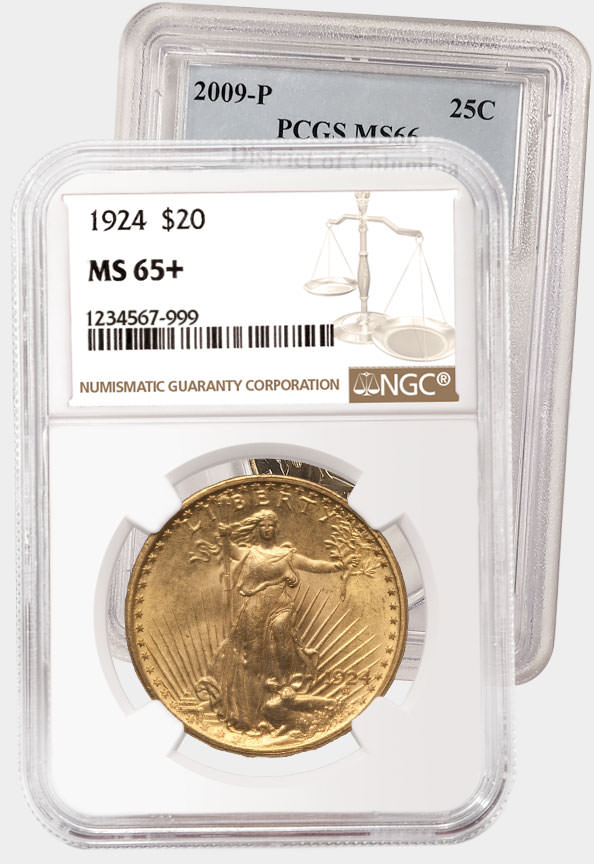Jeff Garrett: The True Story of the 1792 Half Disme
Posted on 6/18/2020
 |
One of the wonderful things about numismatics is the endless sense of discovery the hobby provides. This applies to beginning collectors and seasoned veterans. The 1792 Half Disme has been one of the great classics of American numismatics for generations. Much of that allure, however, has been based on what is probably fiction. But in my opinion, the true story of the coin, which has only been discovered in recent years, is even more compelling than the myth.
The 1792 Half Disme has also seen an elevation of status in A Guide Book of United States Coins (the Red Book), of which I am the Senior Editor. Since 1947, when the Red Book debuted, the 1792 Half Disme was to be found in the Colonial section. We recently added the coin to the beginning section for regular issue Half Dimes. This decision was based on clear evidence that the coins were struck for general circulation and are not pattern coins like the other issues of 1792.
In 1792, as part of an attempt to develop a national coinage, US Mint employees struck 1,500 silver Half Dismes in the cellar of Philadelphia saw-maker John Harper’s factory. These tiny silver coins bore the image of Liberty on one side and a flying eagle on the other. They were valued at five cents each (or half of a dime).
Collectors sometimes have trouble pronouncing the word disme. Is it the phonetically obvious "diz-me," or is it the traditional way in which we pronounce dime today (the word into which disme transmogrified)? Actually, the answer is neither. Disme is a French word, pronounced "deem." Thus, the Half Disme is properly pronounced "half deem."
A couple of interesting stories surround the 1792 Half Disme. One story, told since the 1840s, suggests that President George Washington provided his own personal silver service to be turned into Half Dismes, yielding enough to distribute to friends, family, government officials and VIPs. Another is that the likeness on the coin is that of Washington's wife, Martha, who does bear some resemblance to the lady on the coin. Both of these stories are legends, not facts.
 |
|
| A 1792 Half Disme believed to have been owned by David Rittenhouse, the first director of the US Mint. Click image to enlarge. |
|
The true story of the 1792 Half Disme has only recently been revealed. Thanks to new research by Pete Smith, Joel J. Orosz and Leonard Augsburger, published in 1792: Birth of a Nation's Coinage, we now know that Thomas Jefferson, not President Washington, was central to Half Disme coinage.
Jefferson recorded in his Memorandum Book (his private record of income and expenses) that he personally "Delivd. 75.D at the mint to be coined " on July 11, 1792, and "Rec'd from the mint 1500. half dismes of the new coinage" on July 13. Jefferson left Philadelphia that same day for his summer vacation at Monticello, recording numerous expenditures of five cents or multiples in his Memorandum Book.
Expenditures divisible by five are rarely encountered in Jefferson's Memorandum Book both before and after Jefferson's trip, indicating that he spent most of the Half Dismes while vacationing in Virginia. The direct involvement by one of the Founding Fathers greatly enhances the prestige of this early American coinage.
Is the 1792 Half Disme a pattern or a circulation strike? Generally, pattern coins are struck in extremely limited quantities (usually fewer than a dozen pieces) just to test how a coin will appear in design form. A mintage of 1,500 pieces suggests that the 1792 Half Disme was much more than just a pattern. However, because they were struck outside the US Mint, and because no other half dimes were made until 1794, some numismatists consider Half Dismes to be patterns.
Perhaps the best test is that these did indeed circulate as coins, as evidenced by the recent Jefferson discovery. Finally, in his fourth annual message to Congress on November 6, 1792, President Washington specifically stated that the Half Dismes had been made as regular coinage.
Another way to approach the question is to point out the existence of a unique 1792 Half Disme struck in pure copper. Such a piece indicates that the dies were first tested on a blank of base metal. Then, the designs and striking qualities were approved, and a production run of 1,500 Half Dismes began. If the copper piece were a pattern (or a die trial), how can the silver versions that followed be anything other than actual coins?
Most examples of 1792 Half Dismes are relatively low grade, and coins with some form of damage are not unusual. Quite a few examples are known with holes, probably the result of the coins being saved as keepsakes of our country's first coinage. Buying certified examples of this issue is a must in every grade. High-grade circulated examples of Very Fine or Extremely Fine trade for about $75,000 to $100,000. Problem-free coins are extremely desirable.
The 1792 Half Disme’s mythical status is now based on solid numismatic research. Based on the findings above, these coins once passed though the hands of Thomas Jefferson. This historical connection is sure to make these coins even more desirable well into the future.
A few examples of the 1792 Half Disme are known in amazing Gem condition. Some feature Prooflike surfaces, suggesting presentation piece status. Perhaps one of these exceptional coins was made as a gift to President Washington as an example of our nation's first coinage. The coin pictured earlier in this article is claimed to have once belonged to David Rittenhouse, the first Director of the US Mint, and was sold in 2018 for almost $2 million.
Want to see more articles like this? Subscribe to the free NGC Weekly Market Report.
Stay Informed
Want news like this delivered to your inbox once a month? Subscribe to the free NGC eNewsletter today!



